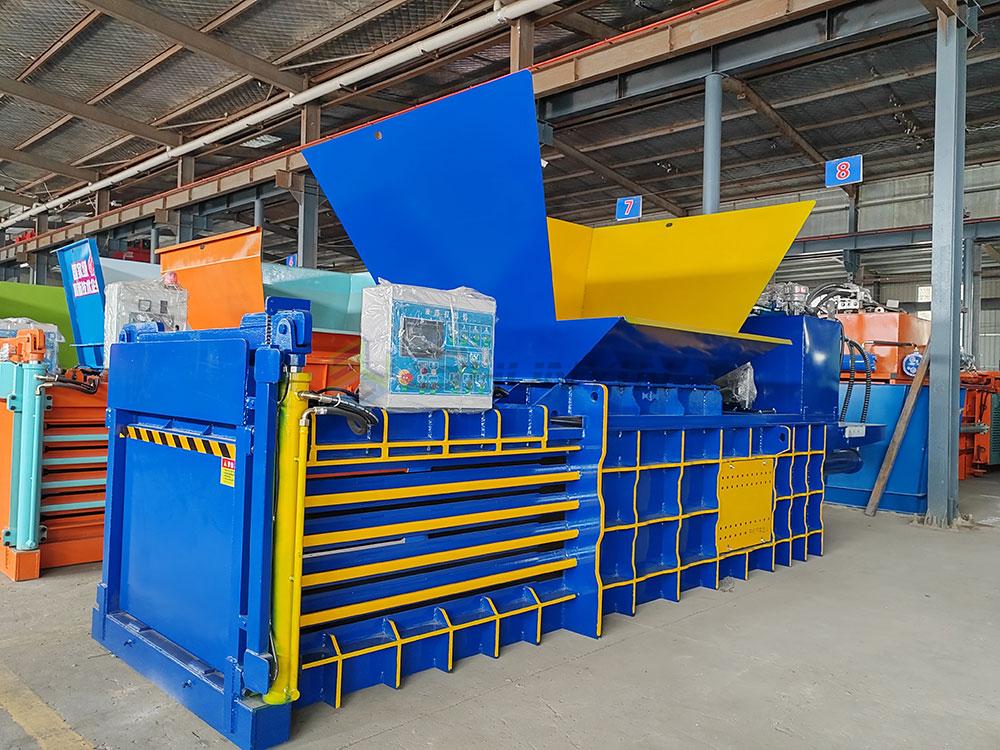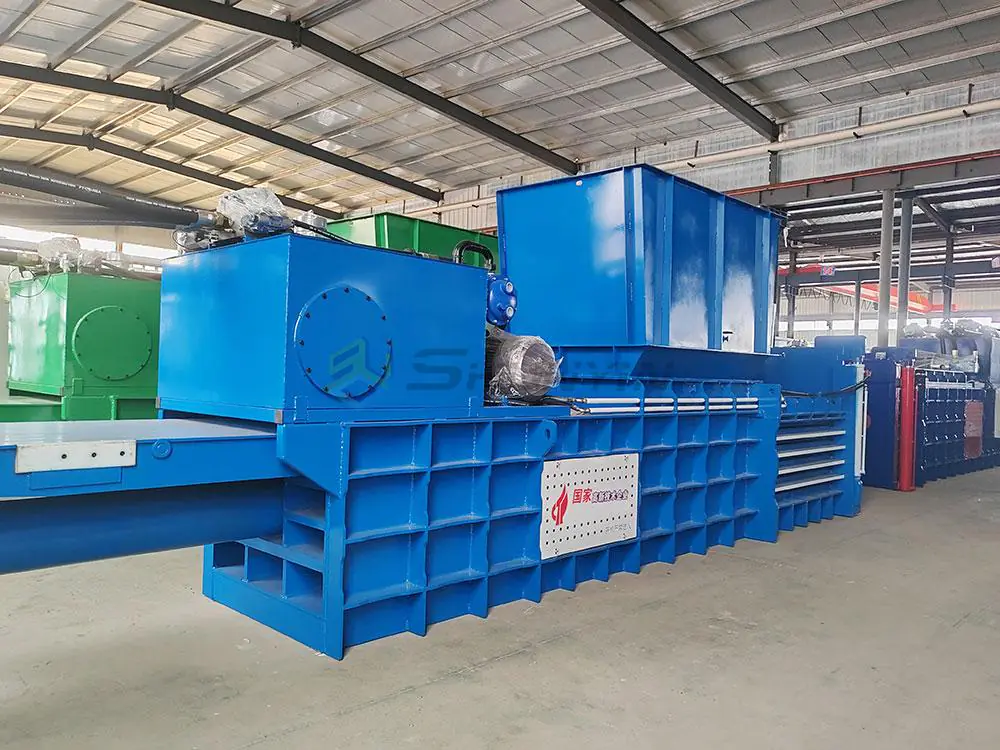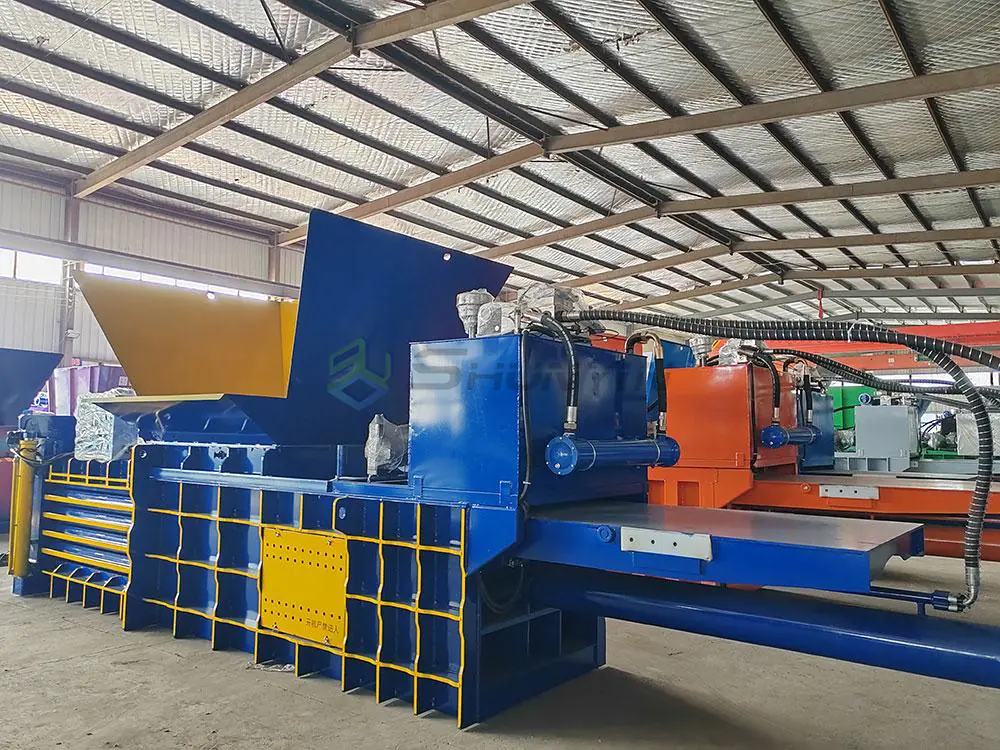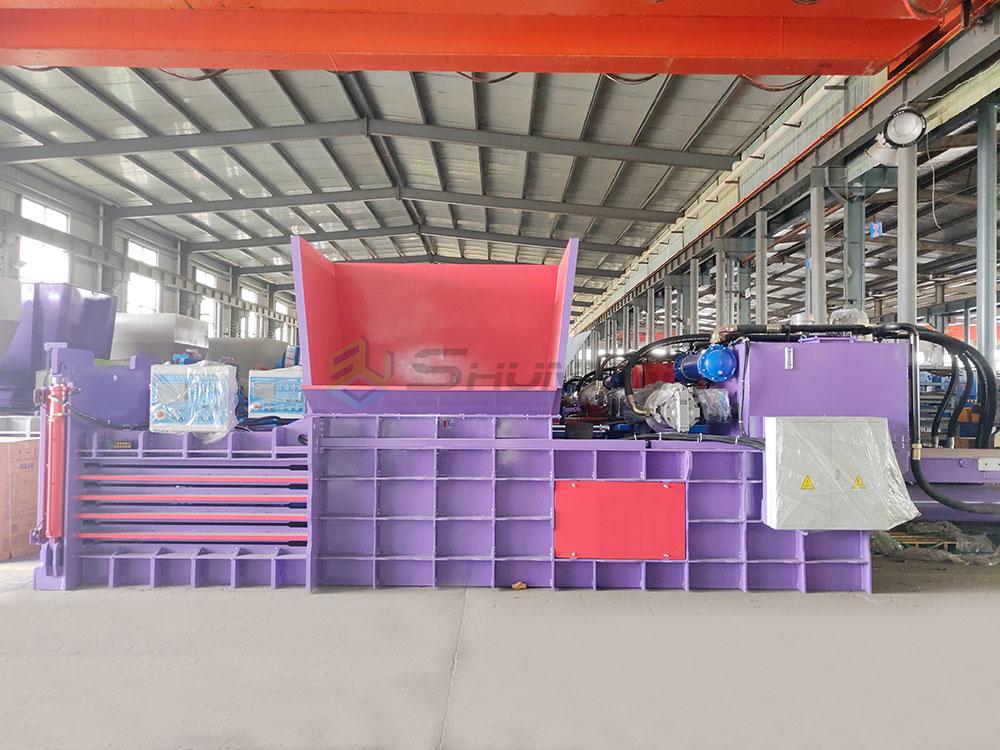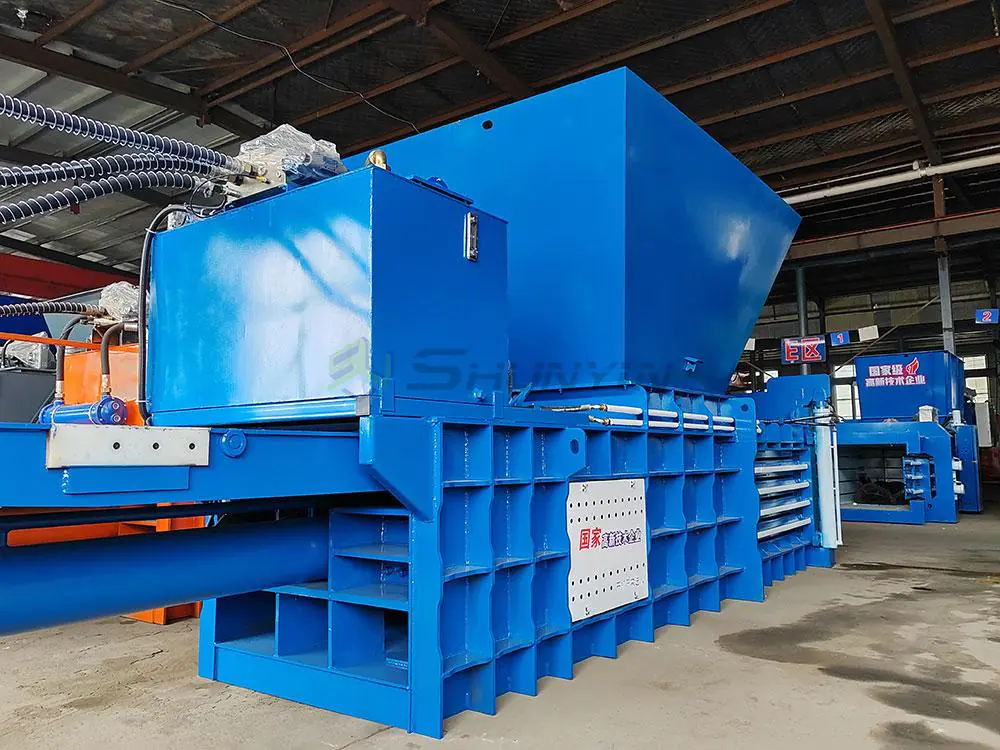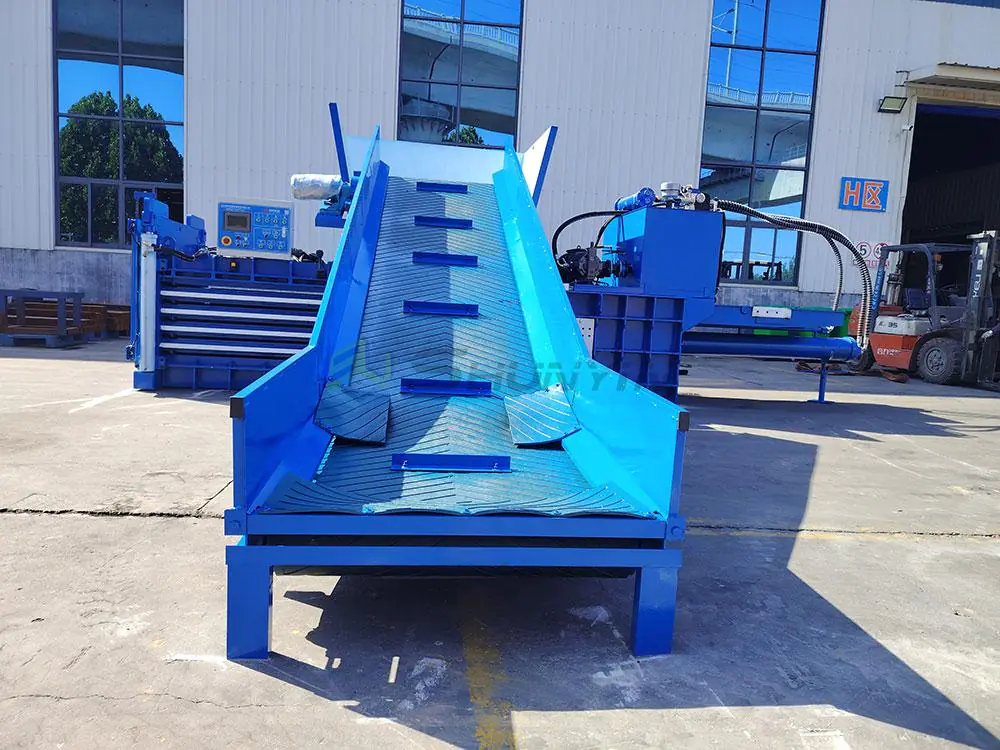
Last week, a Tennessee car parts distributor saved $1,700 weekly after swapping to our SA-220E baler. But let’s get real – how do you choose without wasting $18,000? Here’s my field-tested checklist.
Semi-auto horizontal balers suit facilities processing 8-15 tons weekly needing 53% cost savings vs full-auto. They offer 3.1x faster cycles than vertical models while requiring 13’x15′ space – ideal for growing businesses needing flexibility without robotic prices.
Still tossing boxes like it’s 1999? Let me show how our "Baby Rhino" model improved a Mexican brewery’s profits by 37%. (Secret weapon: programmable pre-press. Ask for demo code BREW23.)
What Is the Difference Between Vertical and Horizontal Balers?
A Seattle recycler lost $24,000 buying vertical balers for cardboard. Here’s why orientation changes everything.
Horizontal balers produce 3x denser bales (18-22 lb/ft³) than vertical models (6-8 lb/ft³) using hydraulic compression vs gravity. Semi-auto horizontal units process 18-22 bales/hour vs vertical’s 7-12, with 68% higher resale value per ton.

"Wait," you ask, "isn’t vertical cheaper?" Let’s calculate true costs over 5 years:
Total Cost Analysis (Mid-Size Operation)
| Factor | Vertical Baler | Semi-Auto Horizontal | Difference |
|---|---|---|---|
| Initial Cost | $16,500 | $34,800 | +$18,300 |
| Labor Cost/Year | $38,200 | $14,700 | -$23,500 |
| Resale Income/Year | $4,100 | $11,900 | +$7,800 |
| Maintenance/Year | $6,800 | $3,200 | -$3,600 |
| ROI Period | 26 months | 14 months | 46% faster |
Our SA series features auto-lubrication that cuts maintenance time by 67%. Want proof? We’ll send worn parts from operating units – check the gear teeth wear yourself!
What Is an Automatic Baler?
A Korean electronics plant processes 42% faster with full-auto balers. But let’s focus on why semi-auto hits the sweet spot.
Fully automatic balers use PLC controls and sensors for complete hands-off operation (2-3 cycles/semi-auto hour). However, they cost 76% more ($78k vs $35k) and require dedicated conveyor systems – often overkill for 50-150 bale/day operations.

Still dreaming of lights-out baling? Consider these hard truths before spending:
Automation Reality Check
| Feature | Semi-Auto | Full-Auto | Practical Impact |
|---|---|---|---|
| Setup Time | 2 hours | 3 days | +72hr production loss |
| Error Recovery | Manual override | Technician required | $370/incident |
| Flexibility | Handle varied sizes | Fixed bale sizes | Limits material mix |
| Energy Use | 0.11kWh/lb | 0.15kWh/lb | 36% higher costs |
| Training Time | 90 minutes | 12 hours | Workforce frustration |
Our semi-auto models include optional "Auto-Learn" that adapts to material types. Curious why some control panels have pizza-shaped buttons? Ask for the training video blooper reel!
What Are the Benefits of Baler Machine?
A Wisconsin cheese factory cut waste costs by 58% using balers for whey packaging. Let’s milk this data…
Balers deliver 7 measurable benefits: 700% space optimization, 3-8x recyclable value, OSHA compliance, 61% tax deductions, 44% energy savings vs compactors, 83% injury reduction, and 4x equipment longevity. Most users achieve ROI in 11-18 months.

Think it’s all mechanics? Let’s geek out on material science:
Density & Value Correlation
| Material | Loose Form Value | Baled Value | Density Achieved |
|---|---|---|---|
| PET Bottles | $0.04/lb | $0.28/lb | 14 lb/ft³ |
| Office Paper | $35/ton | $145/ton | 11.8 lb/ft³ |
| EPS Foam | Landfill cost | $310/ton | 2.4 lb/ft³ |
| Aluminum Cans | $0.60/lb | $0.89/lb | 18.2 lb/ft³ |
Our hybrid compression chambers use tempered steel grids to prevent material "rollout". Fun fact: The green paint isn’t decor – it helps spot hydraulic leaks instantly!
What Is a Horizontal Baler?
A Dubai textile trader tripled export efficiency with our low-profile horizontal units. Let’s define this workhorse.
Horizontal balers compress materials between two hydraulic plates in a horizontal chamber, creating warehouse-friendly bales (typically 60"L×30"W×36"H). Semi-auto models with 50-85 ton force handle 8-22 tons daily – the forklift driver’s best friend.

"Wait," says the newbie, "how’s this work exactly?" Let’s get mildly technical:
The Compression Symphony
| Stage | Pressure | Time | Purpose |
|---|---|---|---|
| Pre-Crush | 15-22 tons | 9-12 seconds | Break material memory |
| Main Compression | 50-85 tons | 18-25 seconds | Achieve target PSI |
| Platen Hold | 70% pressure | 6-8 seconds | Shape retention |
| Bale Ejection | N/A | 4-7 seconds | Prep for next cycle |
Our systems feature pressure sensors that auto-adjust +/- 4% – like cruise control for trash. Psst… that "chirping" sound? It’s Morse code for optimal compression!
Conclusion
Semi-auto horizontal balers balance automation and affordability for growing facilities. Schedule a no-pressure video consultation – we’ll process your actual materials live. First 7 callers get free bale dimension gauges!


